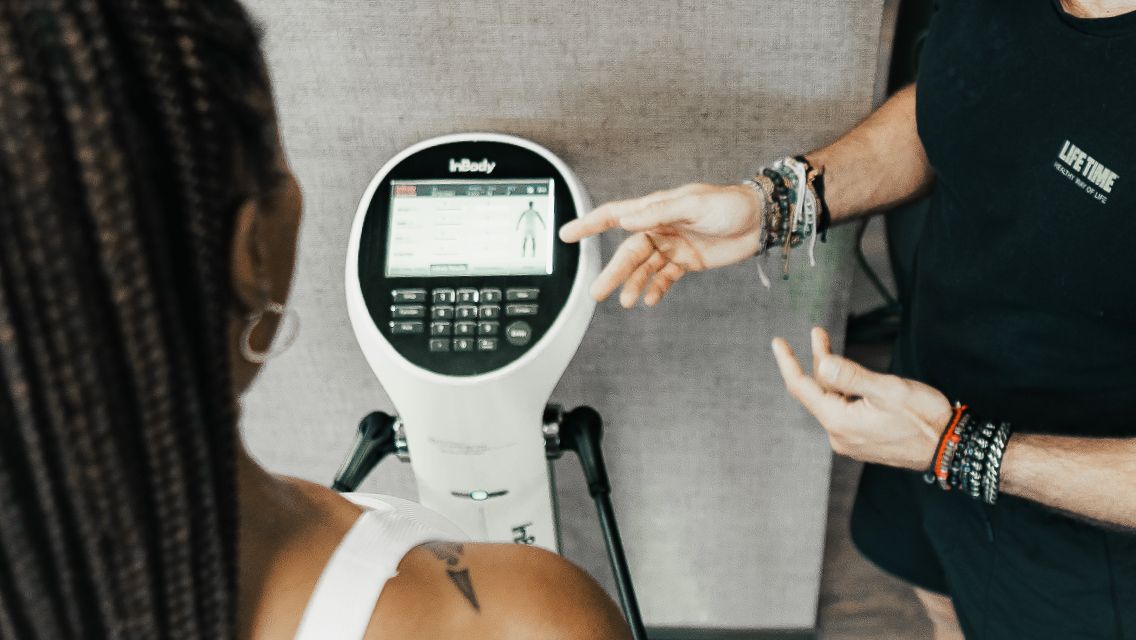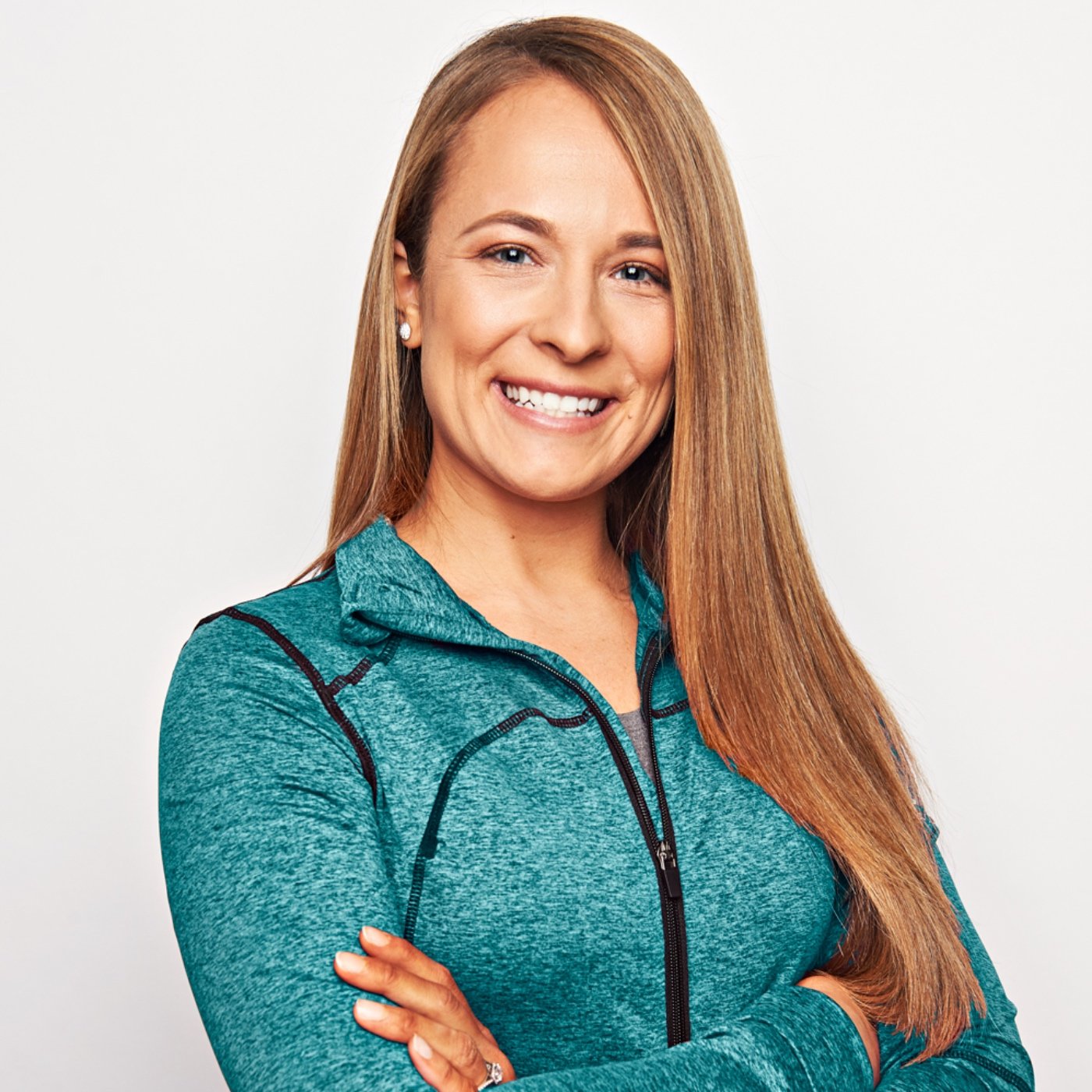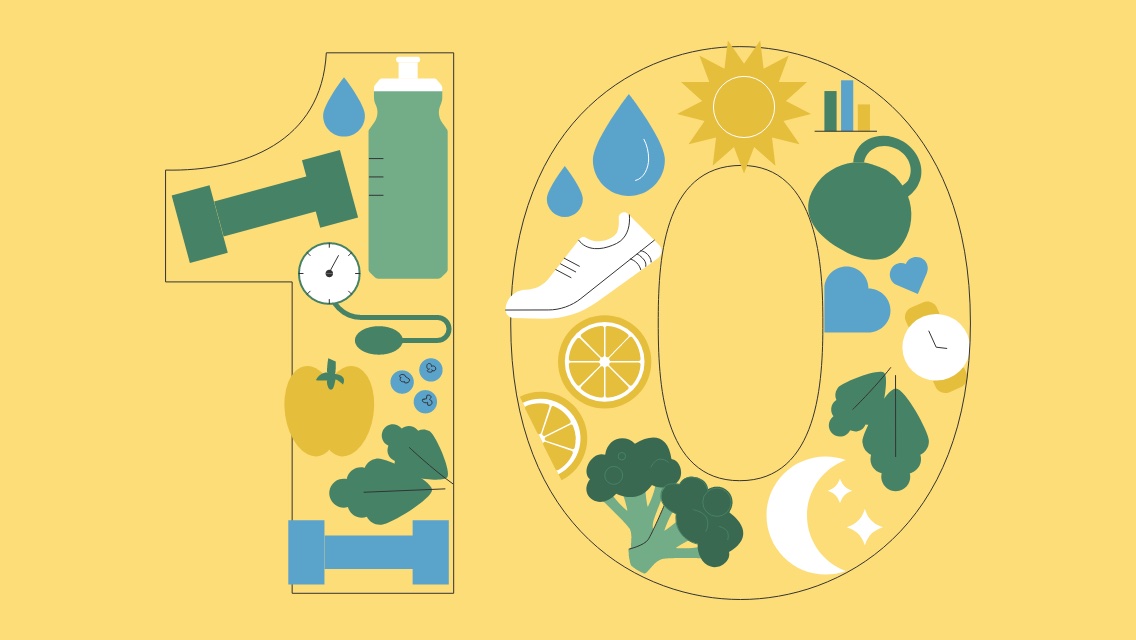“I just want to lose weight.”
From my experience coaching clients, I’ve found weight loss to be one of the most common goals people have when it comes to their health and fitness. Estimates show that upwards of 75 percent of us are overweight or obese. It’s no surprise that, according to statistics, in the last year at least half of U.S. adults attempted to lose weight.
But is simply dropping scale weight the best approach to success for your health and body composition? It turns out, we need to be looking at more information to get the full story.
Limitations of Tracking Weight Alone
Your body weight is made up not just of fat and muscle, but also organs, bones, glycogen, and waste material. I’ve found that when most people state they want to lose weight, what they really mean is that they would like to lose unwanted body fat and feel stronger and more firm. In other words, they’re looking to gain a “toned” physique.
A lean and toned look, however, requires muscle gain for most people, along with loss of body fat.
In fact, a lot of weight-loss gimmicks that promise significant drops in short periods of time rely on losing muscle and body water, both of which are heavy. At first glance, the change in scale weight seems impressive.
However, this type of loss not only slows down metabolism, but it also throws blood sugar out of whack, decreases strength, stamina, and energy levels, and does not produce the aesthetic changes that many are looking for.
In essence, two people of similar stature and height can each weigh the same on the scale, yet vary wildly in their size and how they look and feel all based on the composition of that weight.
Anecdotally, most of my clients who reach their goals (in terms of how their clothes fit, how great they feel, and what their size is) are surprised to find their scale weight is noticeable higher than what they thought it would be.
Gain a better understanding of what makes up your body weight by reading more here: Measuring Body Weight.
What it Actually Means to be Leaner
When evaluating body composition changes from a program over time, it’s ideal to gain a more robust understanding of exactly what is happening under the hood.
Total scale weight is one metric. Here’s what would need to happen, however, for most people to look and feel leaner and more fit:
- Loss of body fat
- Proportional gain of muscle
- Higher total body water
- Higher amounts water inside the cells
- Lower amounts of water outside the cells (in other words, water retention)
As the above changes are happening in tandem, total scale weight can decrease, stay the same, or even increase — even while inches are lost.
This is all normal and an expected part of body composition moving in the desired direction.
Measuring Progress With the InBody
Life Time clubs are each equipped with an InBody scale, which through bioelectric impedence analysis (BIA) uses electrical currents to estimate body fat and body water.
While there some limitations to BIA, the InBody uses multiple frequencies and several body segments through eight electrodes to better estimate body composition, whereas some machines only use one low frequency and look at a single area of the body.
In about one minute, the InBody can analyze and provide several key data points — beyond just your weight — so you can look at how your progress trends over time. Here are the three significant ones to track:
Percent Body Fat
In comparison to scale weight, percent body fat (PBF) is a better indicator of metabolic health because it determines how much of your total weight is made up of body fat.
Your body fat percentage will drop when fat is lost or when muscle is gained (since weight would increase with muscle gain, it’s the percentage of weight made up from fat that would go down).
This metric is the one I’ve found key to track most closely with clients who say they’re looking to “lose weight.” When your body fat is lower, you look leaner.
One caveat: Body fat can come from both fat directly under your skin (subcutaneous) or deep within the abdomen (visceral). Visceral fat is the type that is often associated with the negative health outcomes and chronic disease related to belly fat, whereas subcutaneous fat is the type of fat you can aesthetically see. The InBody measures body fat from both visceral and subcutaneous fat. Some clients like tracking body fat percentage by using calipers and multiple-site skinfolds in addition to the InBody, since the skinfold test only assesses the fat you can see.
Read more here: Understanding Belly Fat.
Water Ratios
The InBody analyzes water inside the cells (intracellular water, or ICW), water outside the cells (extracellular water, or ECW), and total body water (TBW, which is the sum of ICW and ECW). Looking at the ratio of water outside the cells compared to total body water is a valuable metric to trend and is displayed on InBody results as ECW/TBW.
Intracellular water is associated with lean body mass, nutrient retention, and overall good cellular health and integrity. Extracellular water, when in excess, is associated with excess body fat, inflammation, and water retention. It often can correlate with trauma, injury, poor nutrition, or recovering from a tough workout (so therefore may be elevated if you’re sore).
The normal range of ECW/TBW is about 0.360–0.390. Above 0.380 or so can indicate higher than optimal levels of extracellular water (water retention). Values of more than 0.400 should be shared with a physician for follow up.
Note: Athletes or those with a good amount of lean tissue tend to have ratios at the lower end of the range.
Skeletal Muscle Mass
This metric refers to the muscle that’s attached to bone and is the one that’s affected most by consistent resistance and strength training and adequate protein intake.
From my experience as a coach, I’ve found that those with a weight-loss goal are initially resistant to the idea of building muscle.
However, once those same clients experience the benefits — and see the changes — that come from muscle building, they then realize that tracking this metric (with a goal of building skeletal muscle mass, or SMM) is key to achieving their desired goals.
Not only does muscle provide several health benefits (such as supporting carbohydrate tolerance, joint health, and more), but it also produces a shapely, firm, and toned look. And contrary to what many people fear, it’s actually incredibly difficult to get “bulky.” It certainly does not happen by accident.
Read more here: 7 Body and Mind Benefits of Building Muscle.
Pre-Weigh-In Protocol Matters — a Lot
“Is the InBody scale really accurate? I seem to get different readings every time I use it.”
I’ve received this question numerous times from Life Time members, and the concern almost always goes back to the protocol they follow, or rather don’t follow, prior to assessment. The test’s data points rely heavily on making sure that certain conditions are in place, otherwise the water balance and analysis are significantly skewed.
We advise obtaining an InBody measurement around the same time of day and under the following set of conditions:
- Fasted from food and water for three hours prior to testing
- No alcohol for 24 hours before testing
- No exercise for 12 hours prior to testing, and no strenuous exercise for 24 hours prior
- Avoid anything that can shift your body’s water balance beforehand, including taking a shower or sitting in the sauna or hot tub
- If possible, use the restroom prior to measurement
- Where applicable, note that inaccuracies are expected immediately before and during menstruation
Here are the steps to follow during an InBody assessment so the machine can best assess you:
- Ensure you are barefoot
- Empty any pockets and remove all jewelry and heavy clothing
- Line up the back edge of your heels with the back part of the foot electrodes
- Stand tall and hold the handles lightly with your arms about 15 degrees away from your body while keeping your muscles relaxed
- Do not move or speak during the analysis
With the above steps in place, consistent InBody weigh-ins will provide valuable data trends for you to track over time.
One important note: Those with defibrillators or pacemakers should not use the InBody. It’s also not accurate for those who are pregnant or menstruating.
Frequency of Weigh-Ins
The more often you weigh-in (while following the above protocol), the more data you have to trend. Rather than hanging your hat on any one individual weigh-in, consider a weekly InBody assessment and evaluating the patterns you see over four to eight weeks at a time.
Remember, any one single weigh-in might be thrown off from fluid shifts or other factors. For example, if you are experiencing a lot of stress, your body is likely going to hold on to more sodium, and therefore more fluid. It might also be out of whack if you’re fighting a cold or still recovering from a tough workout.
Trend lines, versus one-off weigh-ins, are the determinants to use to decide whether or not your program requires updates or changes to get you to your desired goal.





